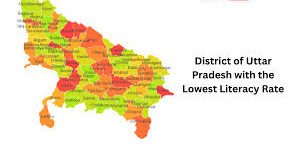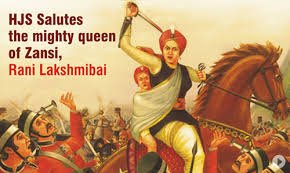District of Uttar Pradesh with the Lowest Literacy Rate: A Detailed Overview
Introduction
The recent literacy report sheds light on the districts of Uttar Pradesh with the lowest literacy rates. This revelation is critical for educators, policymakers, and aspirants preparing for various government exams. The district in focus is Shrawasti, which stands at the lowest rank with respect to literacy rates. With literacy being a key factor in socio-economic development, this statistic highlights the need for reform and improvement in the educational infrastructure.
Shrawasti’s Literacy Rate: The Lowest in Uttar Pradesh
Shrawasti, located in the Terai region of Uttar Pradesh, holds the unenviable distinction of having the lowest literacy rate in the state. According to the latest reports, its literacy rate stands at a mere 46.74%. This figure is alarmingly low compared to both the state average and the national average, which calls for immediate intervention by the government to address educational disparities.
Causes Behind the Low Literacy Rate
The primary reasons behind Shrawasti’s poor literacy rate include a combination of socio-economic factors and lack of proper educational infrastructure. Poverty is widespread in this region, contributing to the lack of accessibility to education. Additionally, traditional social structures, particularly gender inequality, have hindered the education of girls and women in the area.
Another critical factor is the lack of schools and trained teachers. Even in areas where schools exist, teacher absenteeism and inadequate facilities have significantly affected the quality of education, leading to low literacy rates.
Government Initiatives and Challenges
The state government has initiated several literacy programs aimed at improving education in backward areas like Shrawasti. Schemes like the Sarva Shiksha Abhiyan and Beti Bachao Beti Padhao are being implemented to encourage education, especially among girls. However, these initiatives have faced challenges in terms of execution due to local governance issues, lack of monitoring, and insufficient funding.
Impact on Socio-Economic Development
The low literacy rate in Shrawasti has far-reaching implications. Literacy is directly linked to employment opportunities and economic development. With a lower literacy rate, the district suffers from high unemployment, poor health outcomes, and limited access to information. This, in turn, perpetuates the cycle of poverty, making it even more difficult to achieve educational improvements.

Why This News is Important
Focus on Educational Disparities in India
This news is crucial as it brings attention to the severe educational disparities that exist within India, particularly in rural and backward regions like Shrawasti. It serves as a reminder that despite India’s rapid strides in education, there are still districts that lag behind. Understanding the causes of low literacy rates is essential for formulating targeted solutions.
Impact on Government Policies
For aspirants preparing for government exams, especially in administrative roles like IAS, understanding the intricacies of literacy challenges is important. It allows future policymakers to think critically about the effectiveness of current policies and the need for innovation in educational reform. This news highlights the gaps in the implementation of policies like the Sarva Shiksha Abhiyan and brings to light the urgency of addressing these issues to uplift the nation as a whole.
Relevance to Socio-Economic Development
The news also emphasizes the crucial link between education and socio-economic development. Literacy is the foundation of an empowered society. By understanding the causes and consequences of low literacy rates, students can better grasp the importance of education as a tool for poverty alleviation and social progress.
Historical Context: Educational Backwardness in Uttar Pradesh
Literacy Trends in Uttar Pradesh
Uttar Pradesh has long struggled with literacy issues, especially in its rural areas. Historically, districts like Shrawasti have faced educational challenges due to poverty, lack of infrastructure, and socio-cultural barriers. Despite national literacy campaigns, progress in regions like Shrawasti has been slow.
Past Initiatives and Programs
In the past, the state government launched numerous programs aimed at improving literacy rates. Notable among these is the Operation Blackboard initiative from the 1980s, which aimed to improve primary education in rural areas. More recently, the Samagra Shiksha initiative was introduced to promote inclusive and equitable education. Despite these efforts, Shrawasti remains an area with critical educational challenges.
Current Policy Focus
The current focus is on digital education, skill development, and gender equality in education through programs like Digital India and National Education Policy 2020. The news about Shrawasti highlights the need for more targeted interventions in these districts, particularly focusing on building infrastructure and addressing socio-cultural barriers to education.
Key Takeaways from “Shrawasti’s Literacy Rate in Uttar Pradesh”
| S.No. | Key Takeaway |
|---|---|
| 1 | Shrawasti has the lowest literacy rate in Uttar Pradesh, standing at 46.74%. |
| 2 | Key factors contributing to the low literacy rate include poverty, gender inequality, and lack of educational infrastructure. |
| 3 | Government initiatives like Sarva Shiksha Abhiyan have been introduced to improve literacy but face challenges in execution. |
| 4 | The low literacy rate negatively impacts the socio-economic development of the district, perpetuating the cycle of poverty. |
| 5 | Understanding literacy challenges is essential for government exam aspirants, especially for roles involving policy-making and administration. |
Important FAQs for Students from this News
1. What is the literacy rate of Shrawasti district?
Shrawasti has the lowest literacy rate in Uttar Pradesh, standing at 46.74%.
2. What are the main causes behind Shrawasti’s low literacy rate?
The primary causes include poverty, lack of educational infrastructure, gender inequality, and socio-cultural barriers.
3. Which government initiatives are aimed at improving literacy rates in backward districts like Shrawasti?
Initiatives such as the Sarva Shiksha Abhiyan, Beti Bachao Beti Padhao, and various state-sponsored literacy programs are in place.
4. How does low literacy impact the socio-economic development of a region?
Low literacy rates can lead to high unemployment, poor health outcomes, and limited economic opportunities, perpetuating poverty.
5. Why is it important for government exam aspirants to understand literacy issues in regions like Shrawasti?
Understanding these issues is crucial for future policymakers and administrators to develop effective solutions and improve educational and socio-economic conditions.
Some Important Current Affairs Links

















